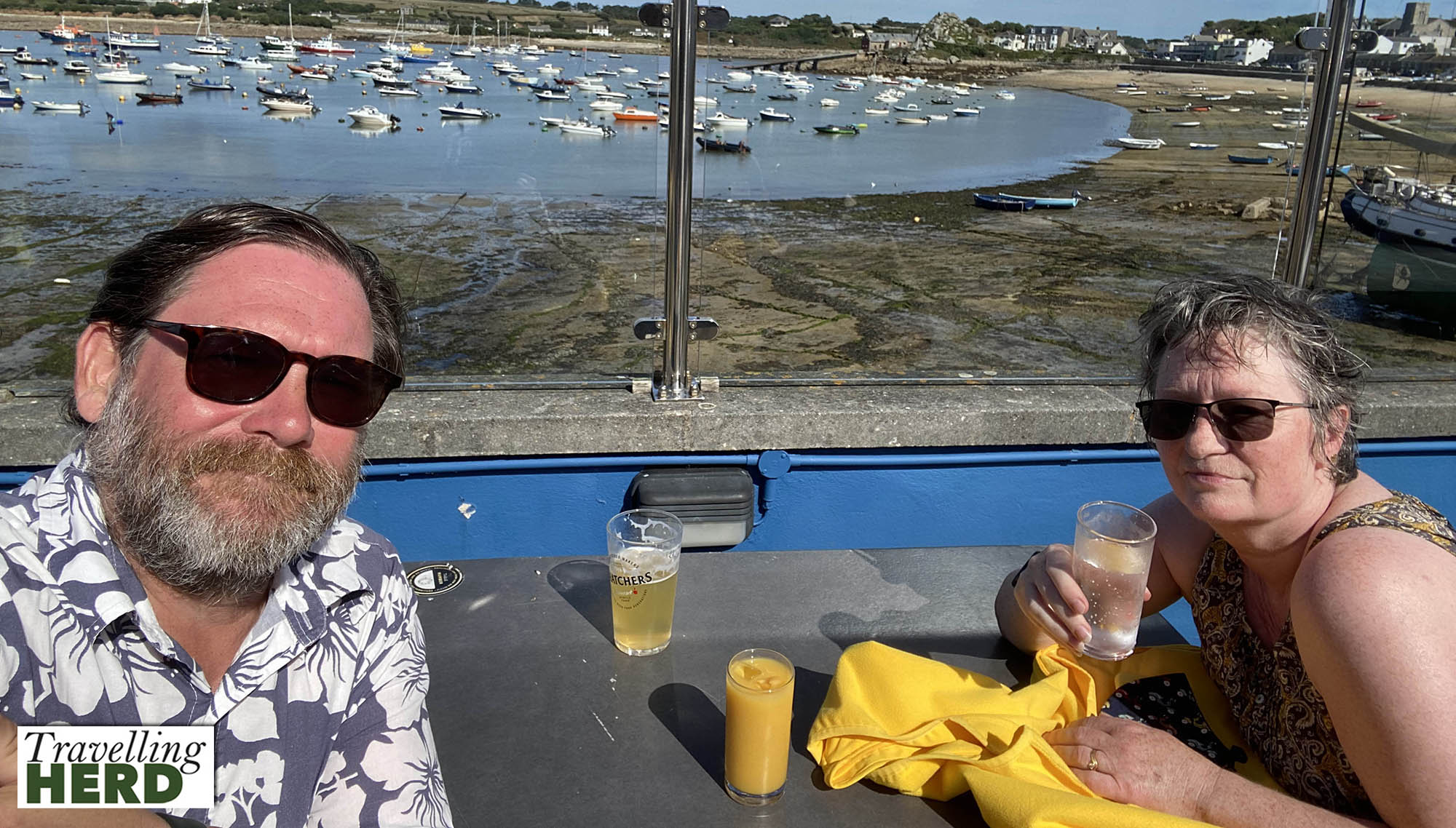Saturday 11th September 2021
Once again there were limited boats we could catch from Tresco because of the extreme tides. However, this also meant that we would have more time on the island we visited. We therefore waved goodbye to the girls at our cottage and set off to catch a boat to St Mary’s.
On the quayside, we saw the helicopter arrive, running only a little late, and watched as it left with the girls on board.

Once on St Mary’s we set off to walk around the entire island.
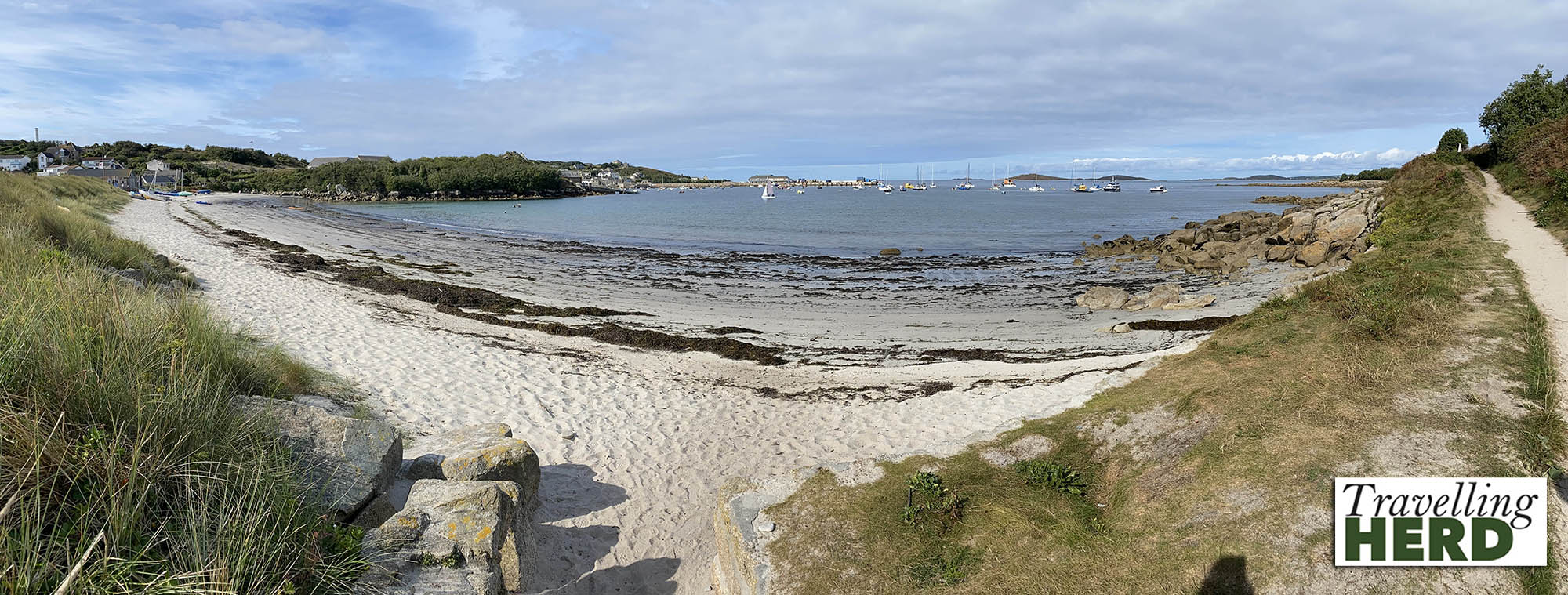
The coastal path goes up past Juliet’s and then on to . . .
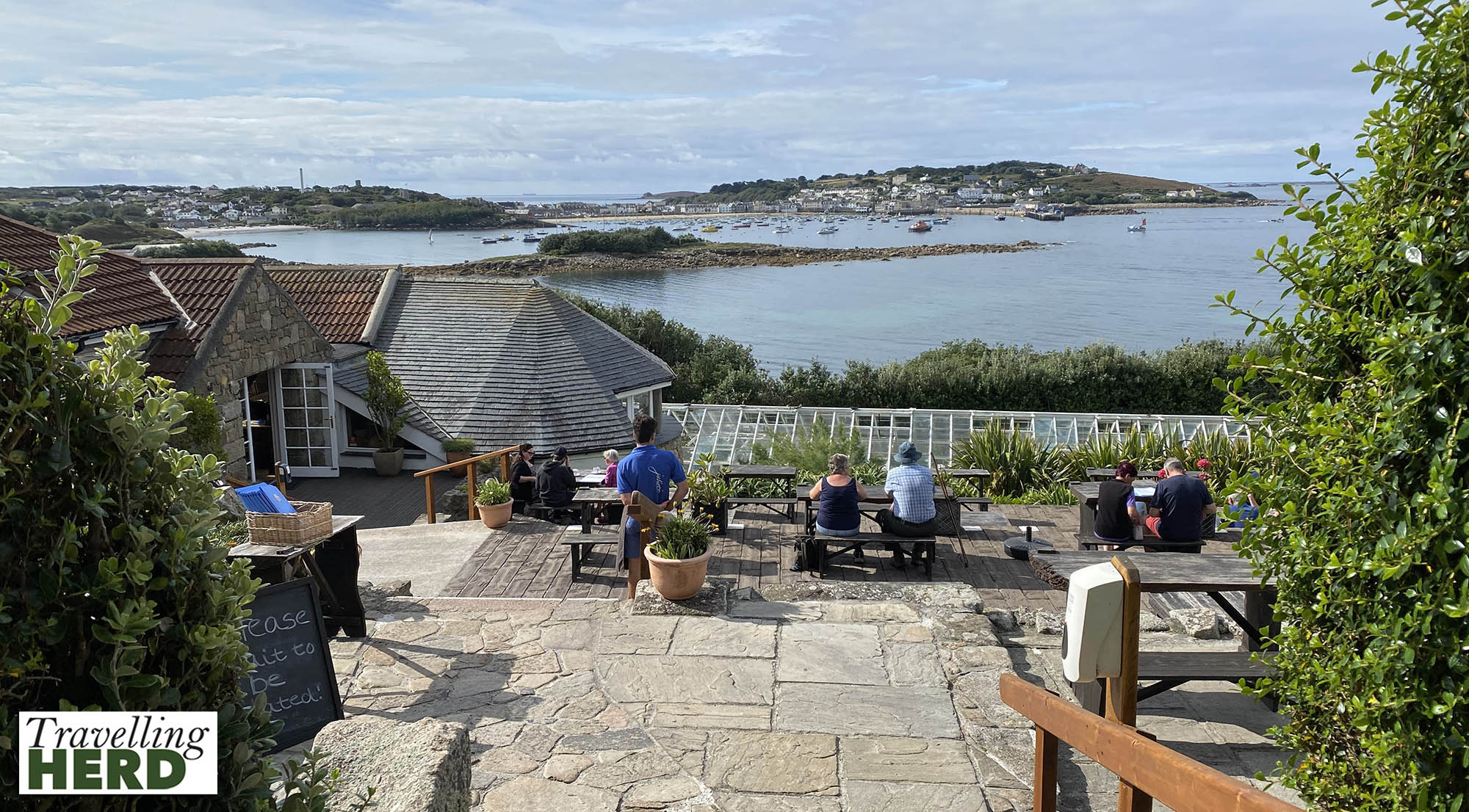
. . . the ancient Iron Age village at Halangy Down.

The site was inhabited until around 600-700 AD and the ruins here were uncovered between 1964 and 1977.
Much of the stone from the site was removed in the 19th century to build a new pier at Hugh Town.
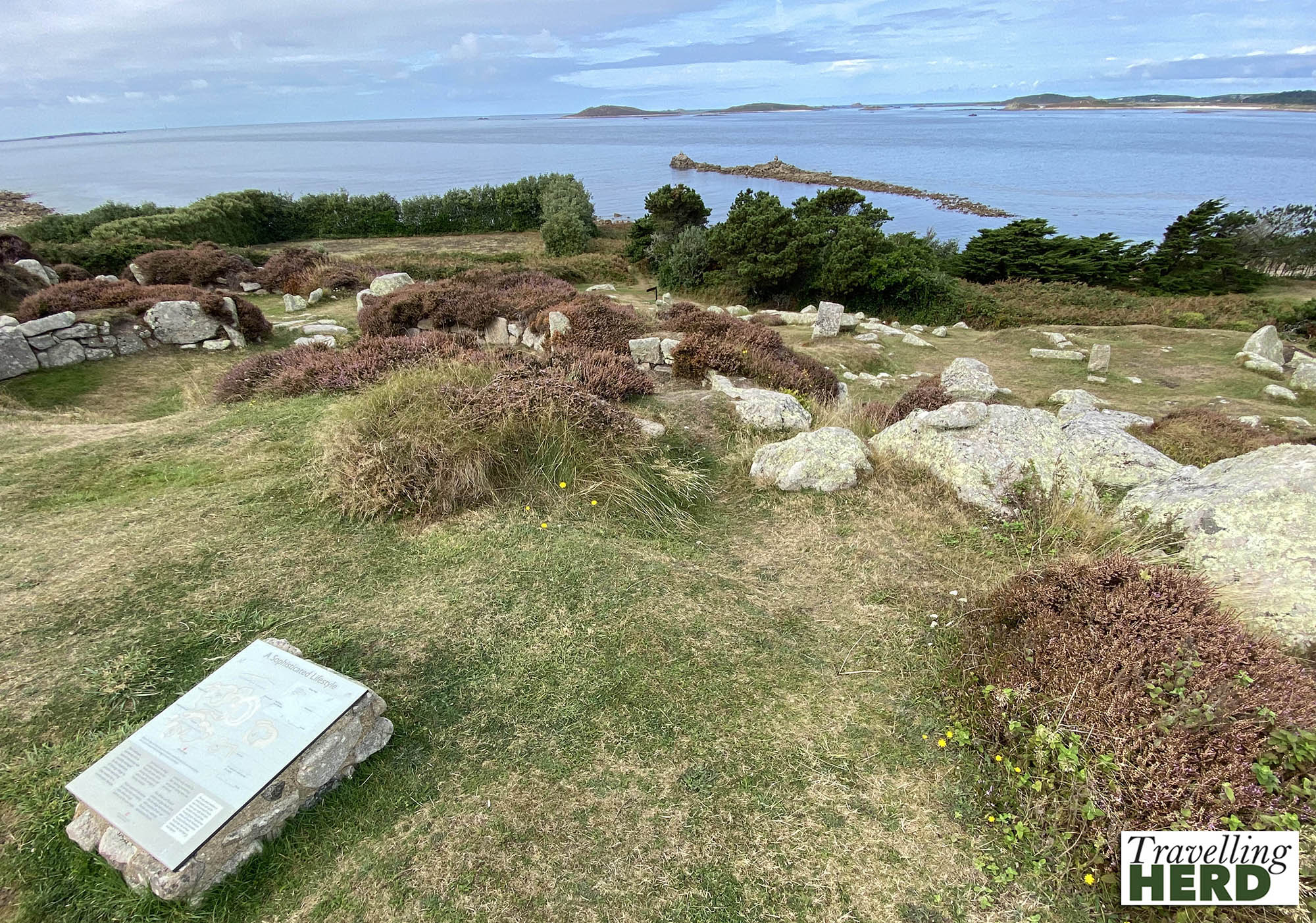
Providing you have line of sight to this modern telecoms tower, you can get a 4G signal on the islands so not everywhere is covered. St Mary’s is known as the site of the tower from which Marconi heard wireless signals transmitted over 30 miles from Porthcurno in 1898.
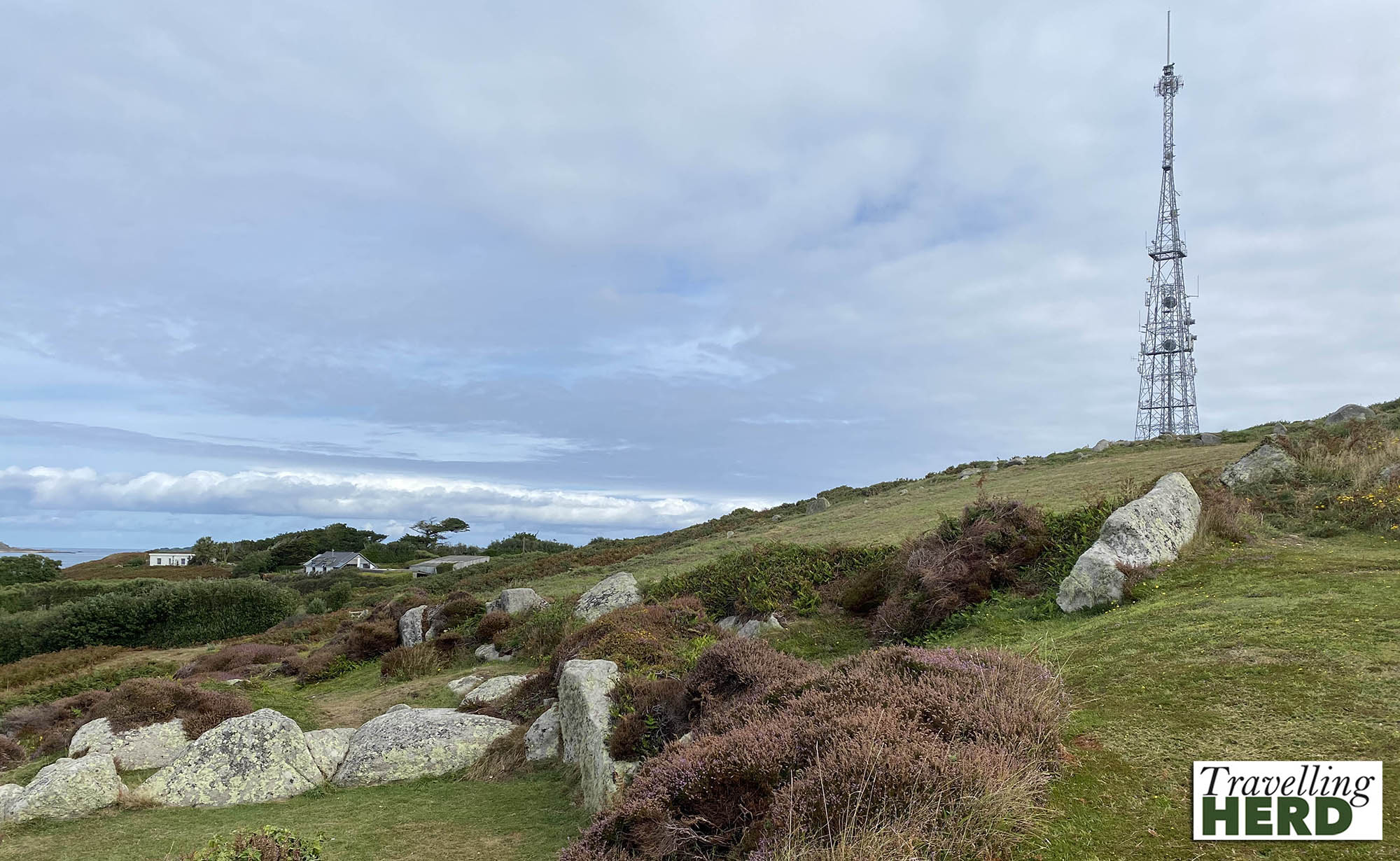
Innisidgen boasts both a lower burial chamber and . . .
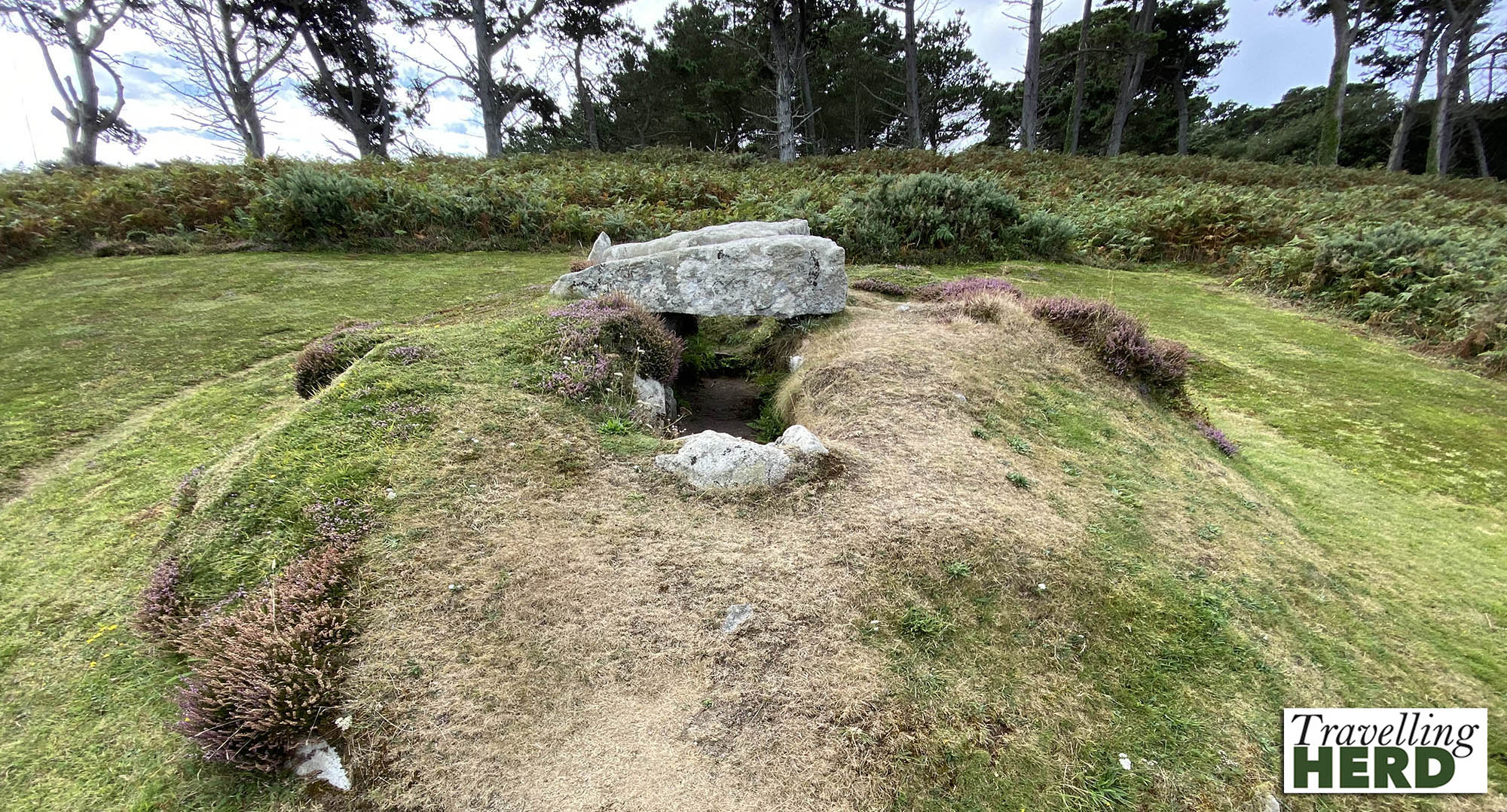
. . . an upper burial chamber both of which are what is known as “entrance graves”, although this style of structure may also have been used as shrines.
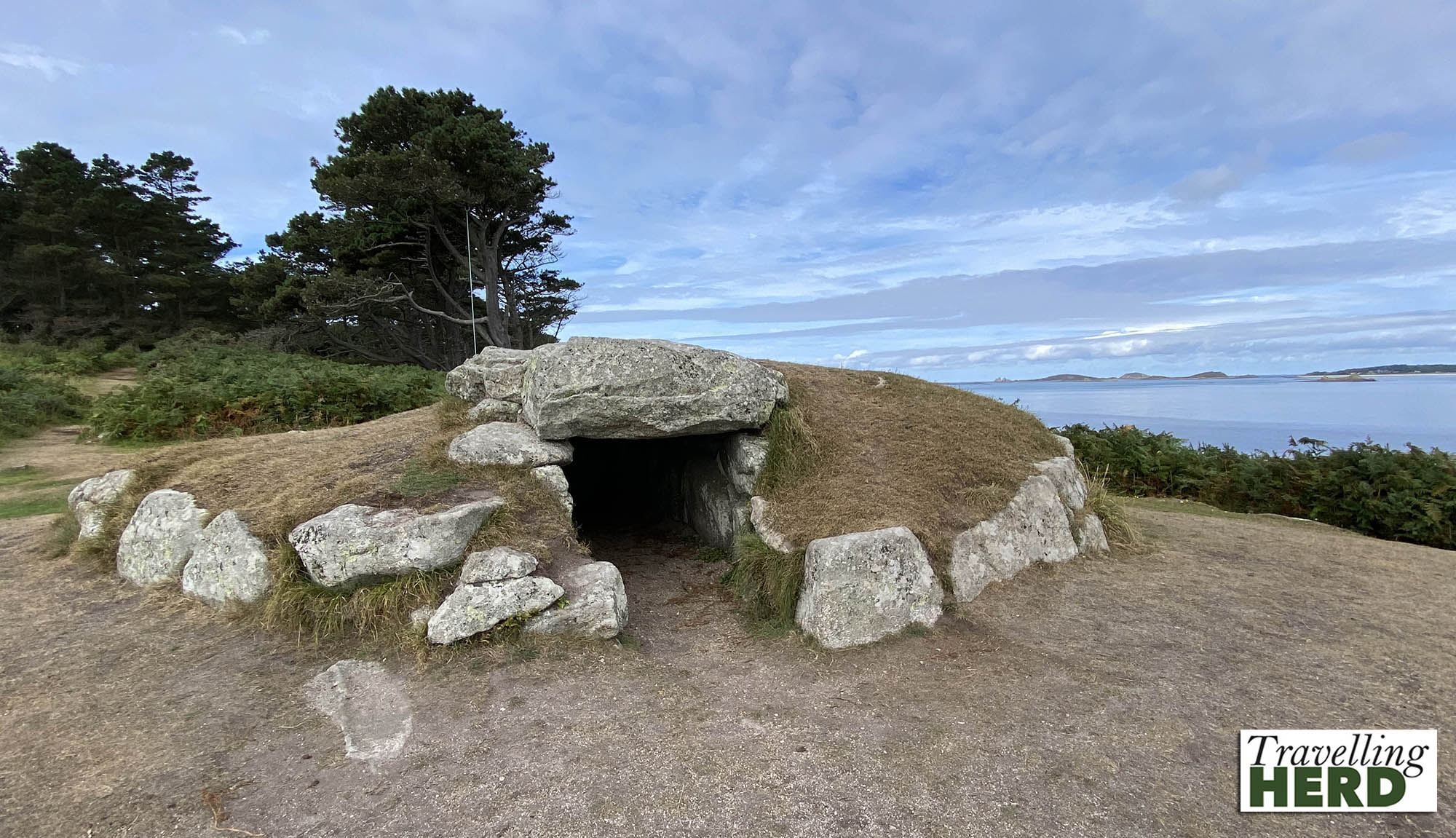
At one point we had to walk along the beach.

Picturesque coves and inlets abound and the coastal path passes close to the airport.

A warning siren sounds and red lights flash if it is unsafe to pass and planes coming in to land fly low overhead.
When it is clear, the path skirts the turning circle at the very end of the runway [see Video of the day].
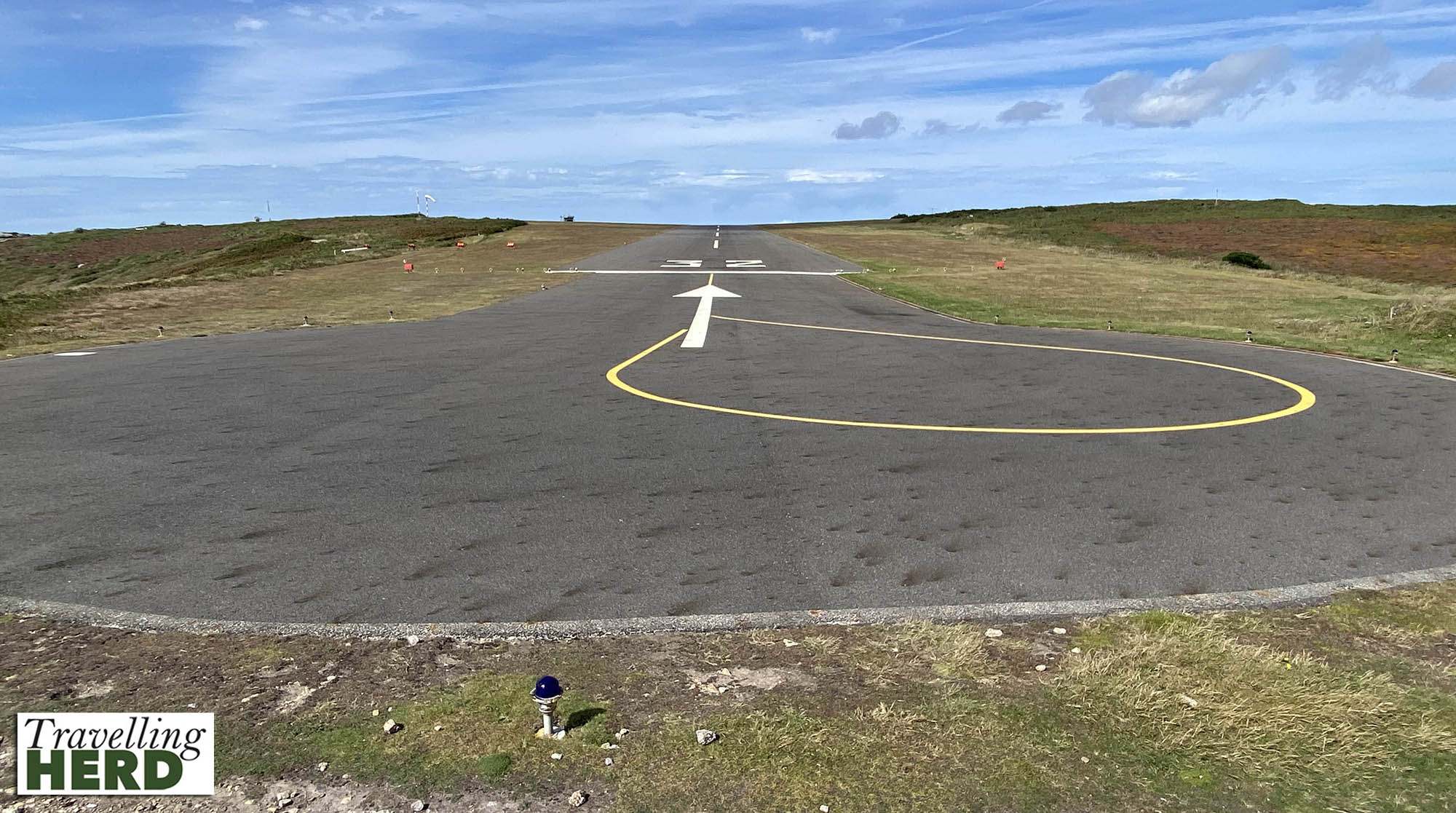
Porth Hellick Beach is famous more for its ancient history than its sand. The heath behind it houses many Bronze Age entrance tombs including the largest of its kind on Scilly, known as the Giant’s Tomb. On the southern boundary sits the Iron Age cliff fort known as the Giant’s Castle.
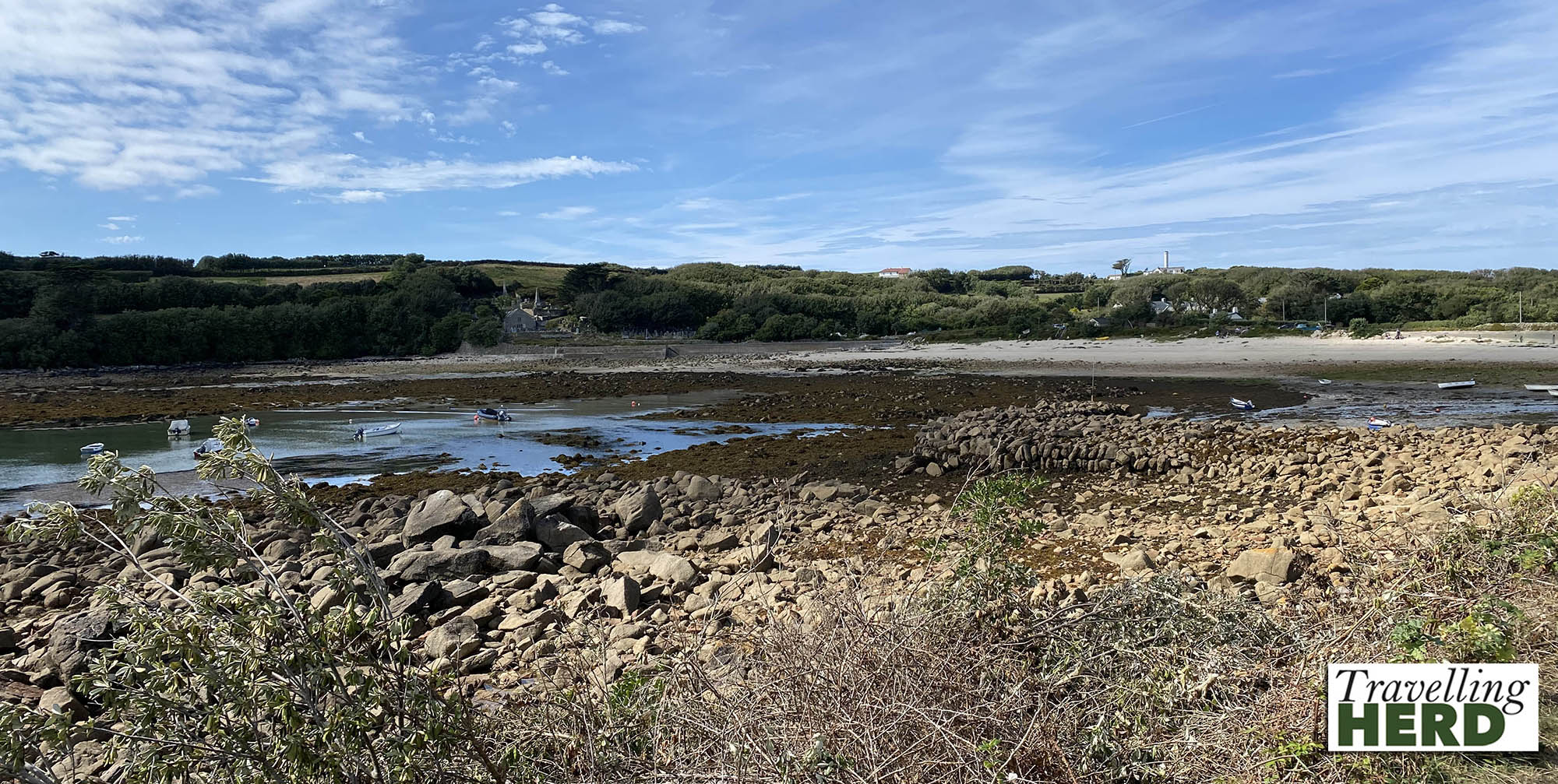
Old Town seen in the distance across Porth Treveglos Bay, is thought to be the oldest settlement on the island.

Peninnis Lighthouse at Peninnis Head was built to replace the one at St Agnes and aids shipping to enter Hugh Town harbour safely. First lit in 1911 it was one of the first gas-powered lighthouses to use acetylene and this drove the rotating optic as well as powering the light. It was converted from gas to electricity in 1992.
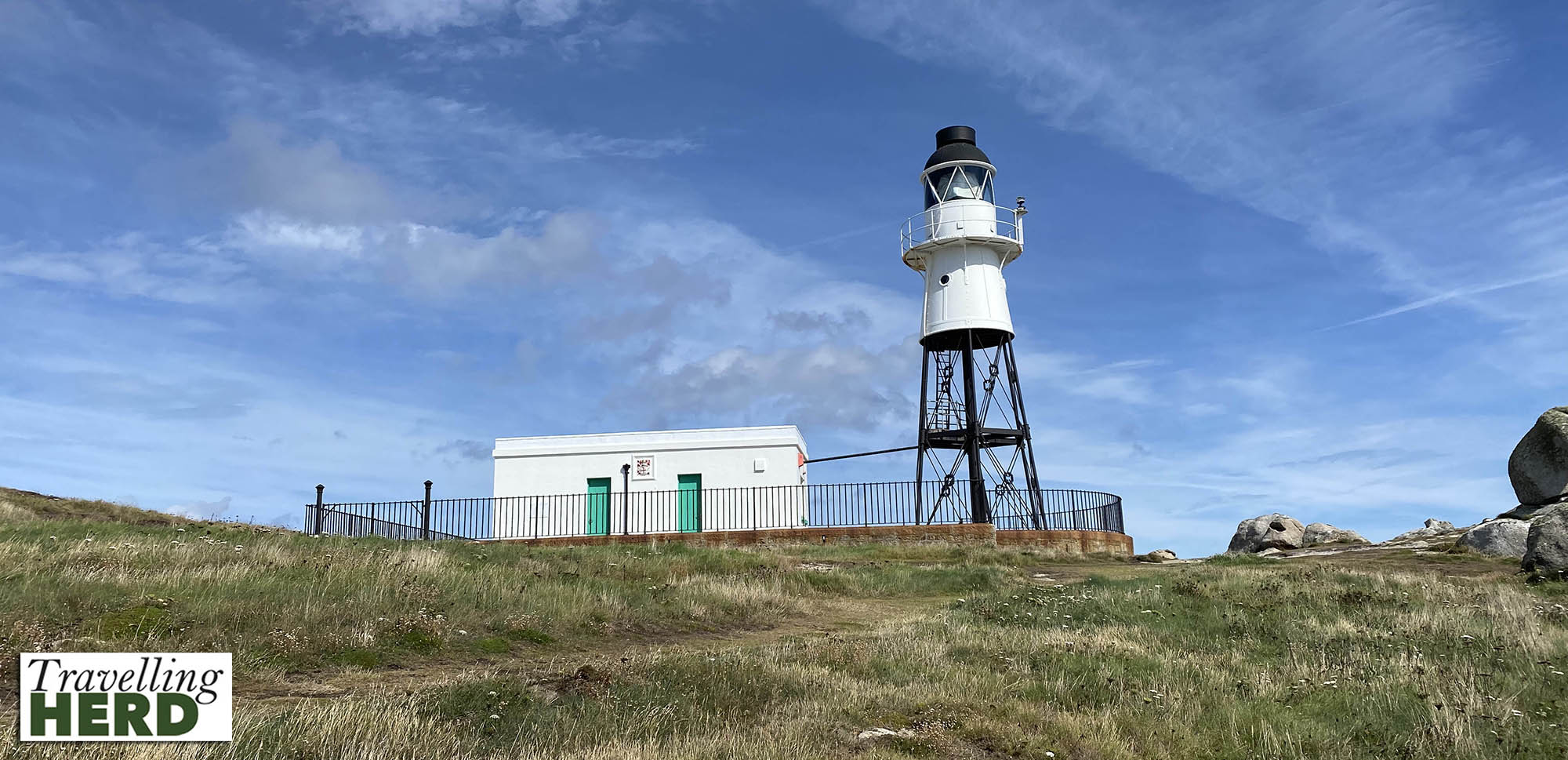
The sky was clear and the view across to St Agnes was tantalising as the tides prevented the boats running and we could not visit. Robert was also unable to go in May due to poor weather so his was a double disappointment.
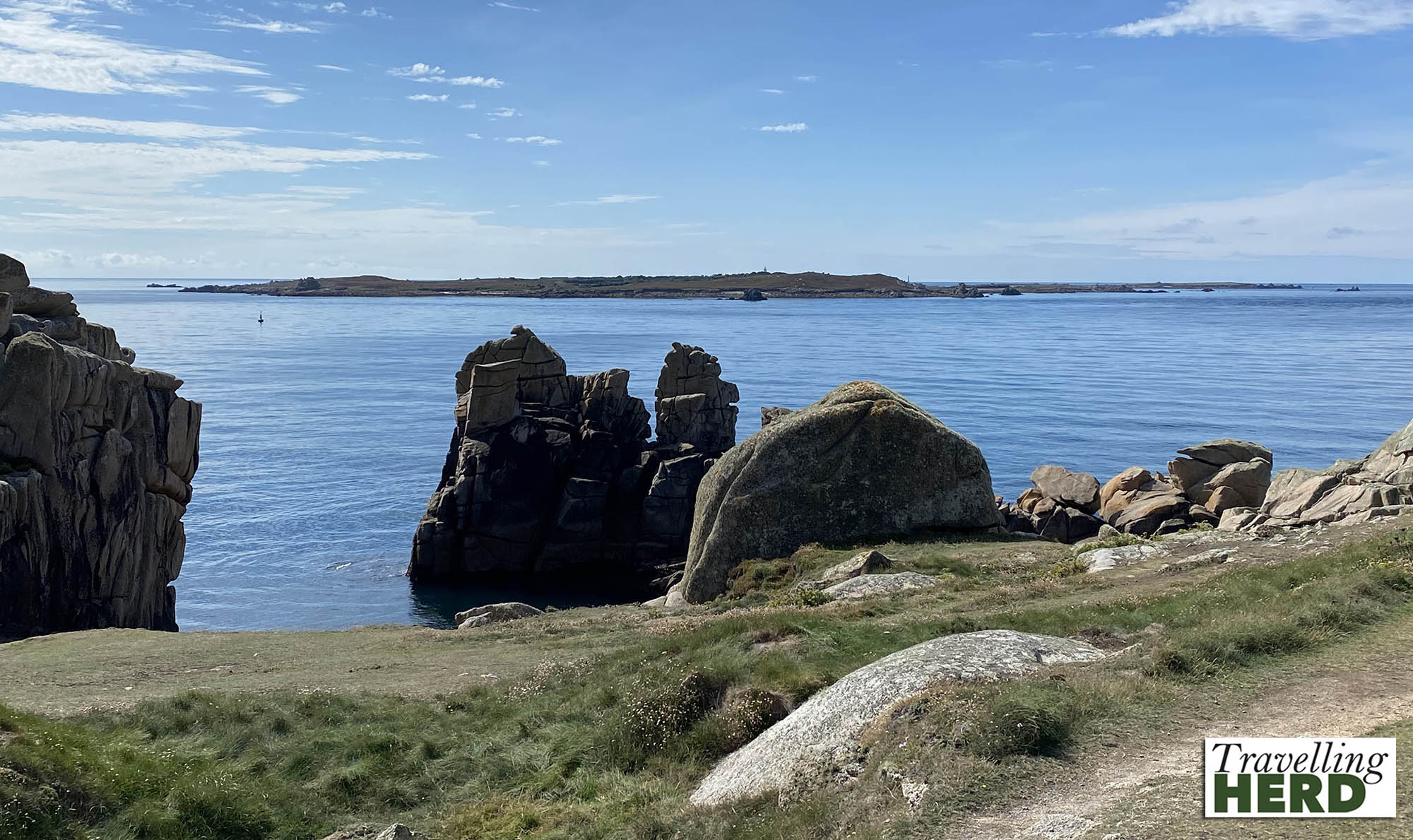
Matilda made use of Strava again to map the walk.

After nearly a four hour walk, liquid refreshment was required. Because of the tides we still had time to pop into a hostelry and we were lucky to arrive at The Atlantic just as they opened the upper terrace [see Selfie of the day]. We will have to complete the full tour by walking around the Garrison Walls at the eastern end of the island the next time we visit.
Video of the day:
Selfie of the day:
